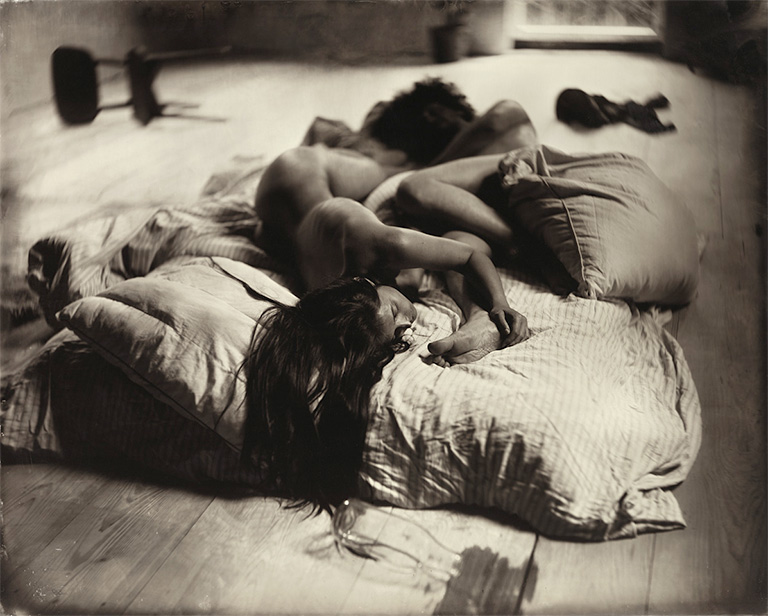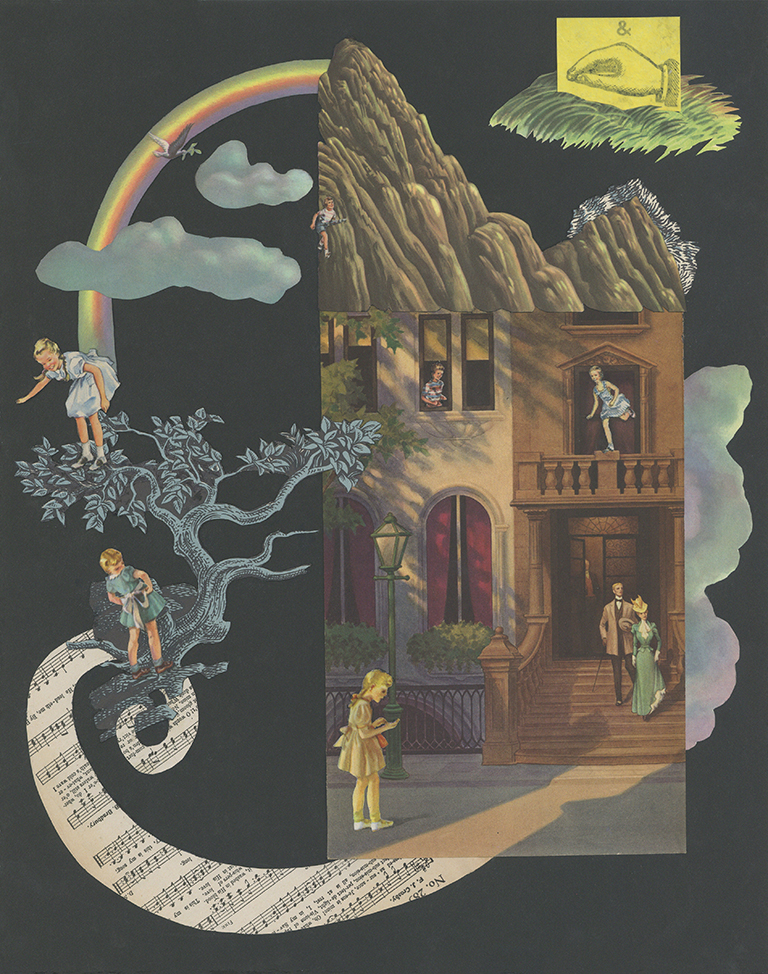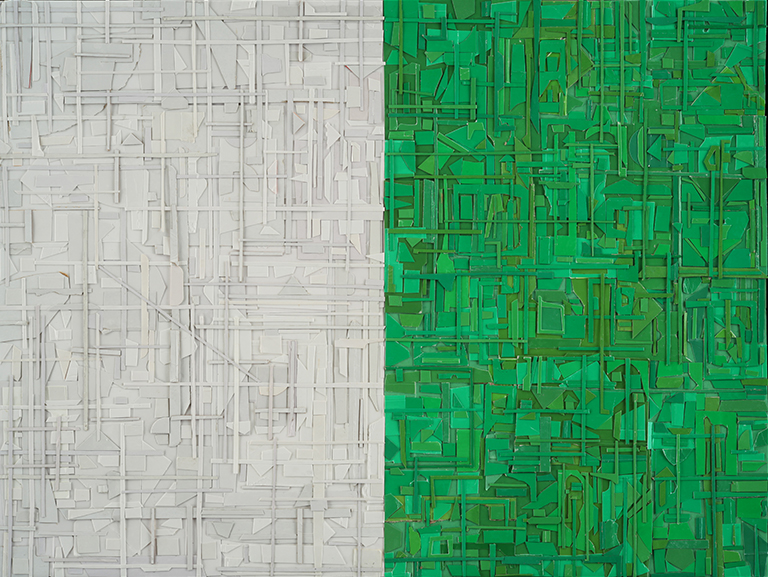by Julia Couzens
Four years ago, gallery director Lisa Dolby Chadwick demonstrated what can happen when poetry meets visual art. She did so in an exhibition called Lightning Strikes: 18 poets, 18 artists. Happily, for lovers of both, lightning strikes again. This time the gallery has mounted an even larger (22 poets, 22 artists) exhibition with a roster that includes a celebrated actor (Peter Coyote), a much-admired curator (Renny Pritikin), a Rock ‘n Roll Hall of Fame inductee (Tom Waits), a MacArthur Fellow (Robert Haas), a US Poet Laureate (Billy Collins), Pulitzer Prize winner (Louise Glück), an attorney for the SF Public Defender (Matt Gonzalez) and a good many other luminaries.The project’s title comes from Raymond Carver’s poem The Painter and the Fish, in which a despairing artist, walking on a jetty, is thrilled and inspired by the flash of a leaping fish. he sight triggers a deluge of work to flow from the formerly desolate artist. The metaphor is apt to the extent that an enlightened moment or a quick glimpse can resuscitate a creative life. That said, the contributors to Lightning Strikes II are all accomplished practitioners, so it’s safe to assume that creative resuscitation isn’t their issue.
Éric Antoine | d’amour et d’eau fraiche, 2019 | Ambrotype | 9.5 x 12 inchesDolby Chadwick’s pairings are, in most cases, inspired. She reads for tone, image and voice – finding many fruitful combinations. But it’s pointless to speculate about which came first, the poem or the art, because none of these pairings were conceived in advance; the selections are Dolby Chadwick’s alone, and they are best experienced side-by-side as reciprocal informants. Sometimes the overlap is uncanny, as when the gallerist locates and brings together paintings and poems that share similar themes and almost identical titles. At other times, the relationships are oblique. They unfold slowly, as words sink in only to be countermanded (or complemented) by images. In other cases, the links are akin to those between sound and image in film, where music imparts a specific meaning to scenes that might otherwise be variously interpreted.
Consider, for example, Eric Antoine’s ambrotype, d’ amour et d’eau fraiche, and Erik Campbell’s poem Familiarity. The first, with its crumbled sheets and intertwined bodies, appears to be a portrait of post-coital exhaustion — until you notice the couple's head and feet at opposite ends of the bed. Campbell’s poem, a list of antidotes to marital boredom, shifts the meaning of photo, suggesting that it represents precisely the sort of experimentation he had in mind:
"They will drink white wine instead of red, take baths at night in lieu of morning showers, and revise their lives whenever repetition risks bordering on anything resembling belief, density, or languidness."
Maria Porges | Fay Dreams, 2017 | Collage | 14 x 11.5 inches
Renny Pritikin’s "Fay Wray" and Maria Porges’ Fay Dreams undermine reality, too, but in different ways. His poem consists of stream-of-consciousness verbal boasts ("I am the Bowery King/I am Kong the stowaway Texan/The big brain is my profession"), while Porges' collaged evocation of Magritte mixes dream-state imagery with concrete representations of storybook childhood innocence and domestic normalcy. Their imagery couldn't be more unalike, yet somehow through the alchemy of shared intentions, they work together.
Matt Gonzalez | look at mine, look at hers, 2019 | Found paper collage | 18 x 24 inches
Matt Gonzalez’s lattice-like collage, look at mine, look at hers, made from paper scraps gathered on San Francisco streets, recalls, in its fractured architecture, the Merz structure of Kurt Schwitters. It plays well against a drunken line from Jack Hirschman’s "Two": “I ran and ran and the puns and brashbrandy flew out of my mouth slantrhymed.”
"Song with Shag Rug and Wood Paneling," Tess Taylor’s poem about a tortured adolescence, built around her parent’s remodeling of a house, resonates with Ann Gale’s Gone are Gold. The latter shows a pixelated, half-disintegrated female face with eyes closed. The line that most powerfully yokes painting to poem goes:
“I, who spent a decade sending hatred toward a glittering asbestos ceiling, have only a distant dump to hate; the settling of old carcinogens.”
Tom Waits’ meditation on death, "Blacksmith," is paired with Lou Ros’ portrait, The Blacksmith. The poem is a speculative run-down of what the final stanza in life might look like. Ros’ painting is a quotidian portrait of a blacksmith at work, hammering an object held in tongs before an open foundry. Despite the implied din, it is Waits’ gravelly voice that rings loudest:
Oh, I see the undertaker there in the mirror
There’s the laundry, and the wind is whipping the clothes
I here choir of crickets
And there is a man dying in the bed that’s next to me
And there are no violins
No long French horn on a castle wall
Just a catalog of ordinary sounds that will soon be
Switched off
It just ends
As did the Beat-era, the historical moment this event is intended to evoke. Still, while touring this exhibition, it’s easy to imagine the time when poetry readings, often set to live jazz, were commonplace in galleries like this. Lightning Strikes II stands as a worthy ode to that part of San Francisco’s past.



